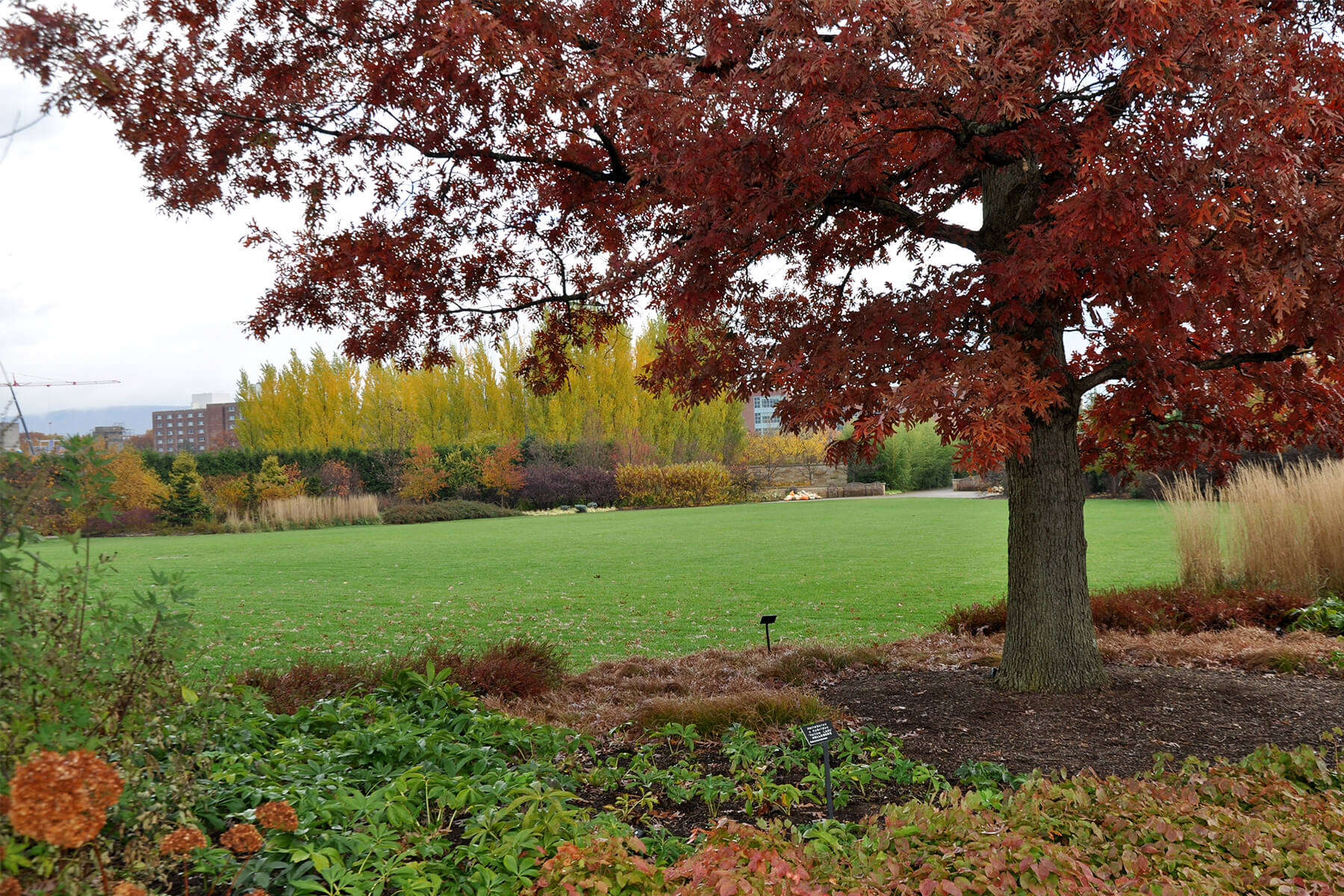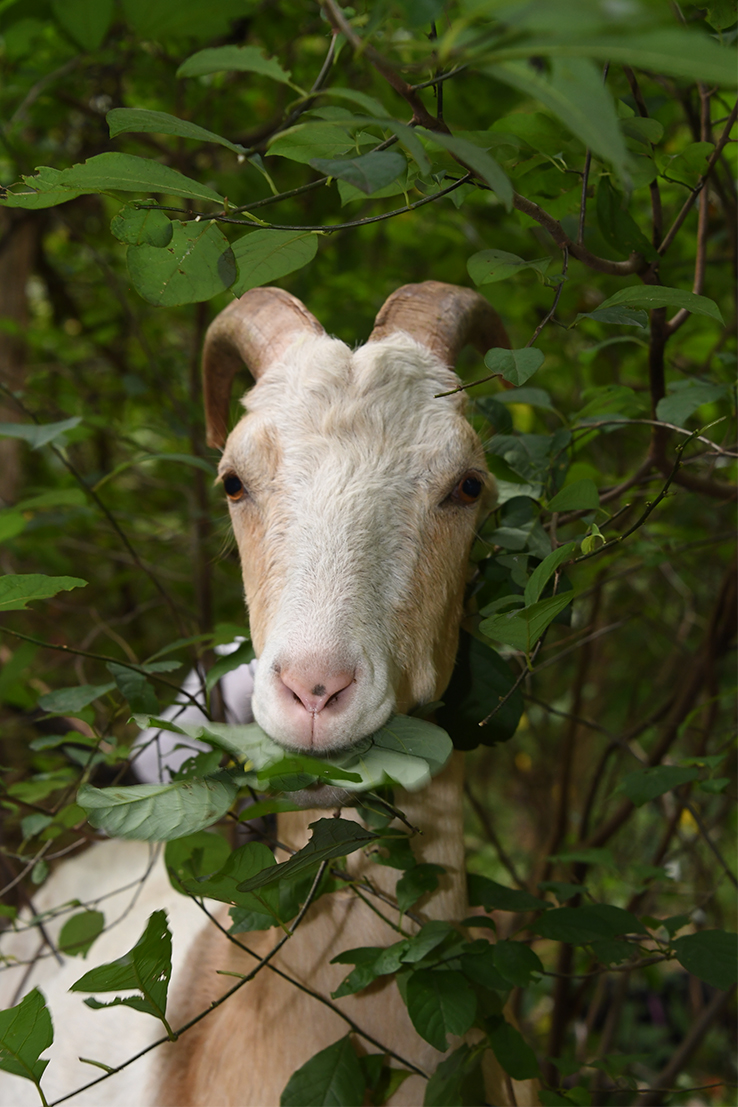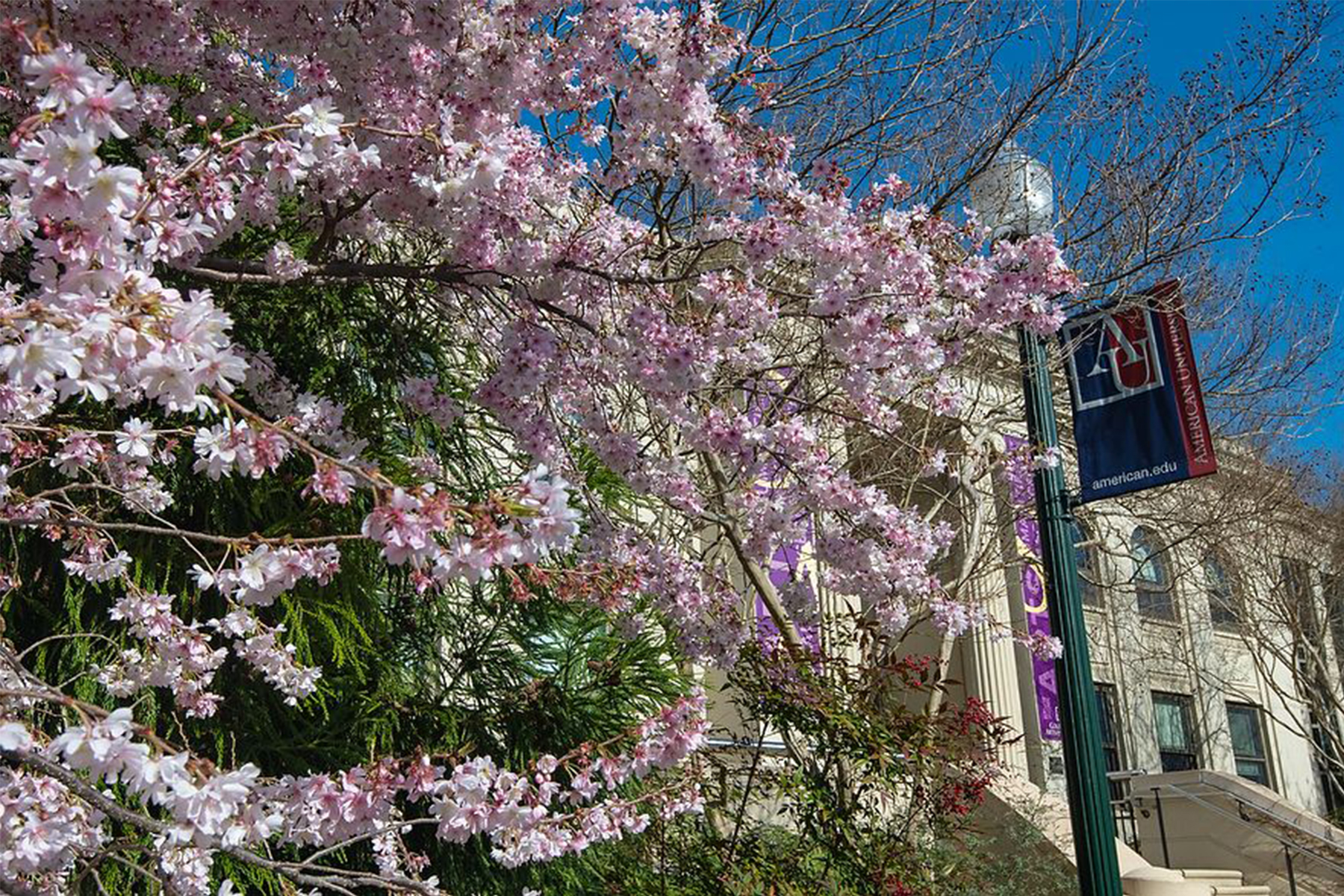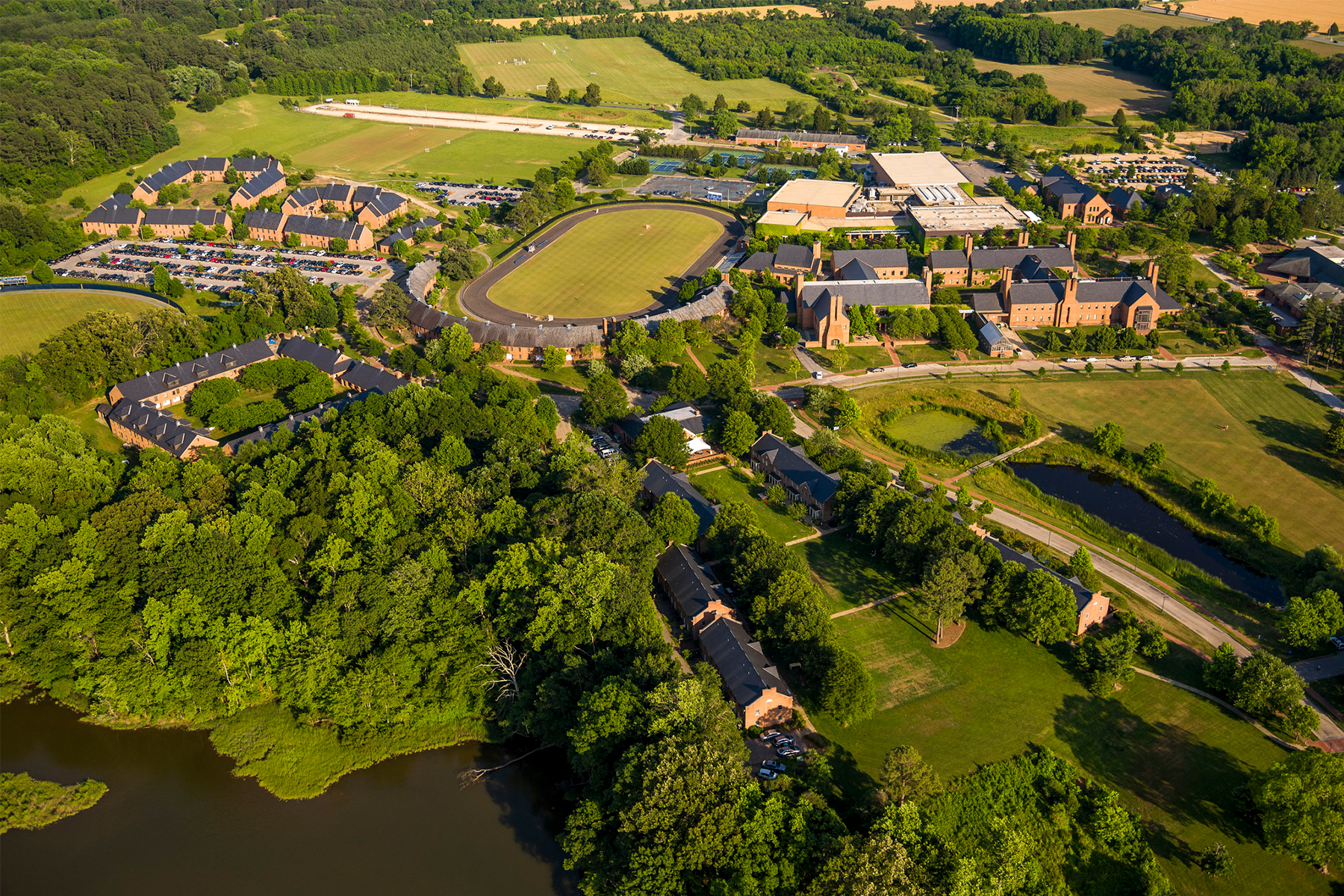These university arboretums are giving it more than the old college try

When you picture a college campus you might think of football stadiums, communal quads and towering dorm rooms, but there’s another part of the collegiate experience that’s growing in popularity. Arboretums (botanical gardens dedicated to trees) benefit students’ mental health, offer cool, shaded alternatives to muggy dorm rooms and provide opportunities for student and faculty research. Put together, college arboretums also offer immense environmental benefits, such as filtering stormwater, storing carbon and providing habitat and food for wildlife. Here in the Chesapeake Bay watershed, we’re fortunate to have dozens of schools that are earning high marks in the tree canopy department.

Enrolling native wildlife
Instead of wowing students with trees from Asia or plants from Florida, many Chesapeake colleges use their arboretums as a haven for native plants and animals. Penn State University has set aside 370 acres of land for the school arboretum, which incorporates 100 acres of natural lands including native prairies and meadows. Native flowers such as rue anemone and witch hazel, as well as the school’s white oak "witness tree" make the site a perfect place for students to learn more about their local ecosystem. The school has even partnered with the American Chestnut Foundation to create blight resistant American chestnut trees—a native species that once flourished in the area.
In Maryland, Towson University is actively working to fill their Glen Arboretum with native trees. As of fall 2021, over 100 of the 120 tree species native to Maryland are growing in the arboretum, raging from large, fully established trees to newly planted saplings. In order to incorporate so many natives, the school is ridding the forest of invasive species. Each spring, the school brings in goats that eat invasive species and clear the way for restoration work on 10-acre woodland. “Goats in the Glen” helps to rid the arboretum of invasives while attracting curious students that might not otherwise visit the site.

A respite from dorm rooms and study halls
College can be a particularly stressful time in a student's life, which makes university arboretums a much needed place for recreation and relaxation. Towson University invites students to destress with an obstacle challenge course on the arboretum property which allows people of all ages and physical abilities to exercise and enjoy the outdoors. On the Loyola University of Maryland campus, Reverend Timothy Brown encourages students to slow down and observe the diversity of trees on campus and in the arboretum through a meditative experience he calls "Quest on the Quad.” Activities like these attract busy students to appreciate these often overlooked parts of campus.
Schooling students on the wonders of nature
With walking tours, educational signage and campus events, college arboretums are wonderful venues for teaching students and local residents about nature and wildlife. Franklin & Marshall College encourages the exploration of its arboretum with a guide to tree planting, a guide for identifying leaves, QR code-enabled signs that bring up tree ID information and even a scavenger hunt for visitors. The arboretum at Penn State is jam-packed with events, including guided hikes, plant identifying sessions and the creative “Stories Under the Sky,” where professors from the Department of Anthropology regale students with histories, myths, and legends under the open sky in the Arboretum.

Stormwater management 101
Every tree planted on a college campus helps to absorb stormwater and keep pollutants out of local waterways. Located just two miles from the Potomac River, American University has planted over 4,000 trees and 385 varieties and species of woody plants to help with runoff from their urban campus. At St. Mary’s College of Maryland, the heavily wooded campus and college arboretum are critical to reducing the school’s environmental footprint, as the schools sits on a river draining straight into the Bay. University arboretums are also being used as testing sites for stormwater management: at Towson University, students have been using the surrounding land on the arboretum to study the impact of runoff from copper roofs. Studies like this one can help guide stormwater management plans throughout the watershed.

College arboretums pass the test
Increasing tree cover is one of the best things we can do to help our local ecosystem, and colleges can play a big role by continuing to green their campuses. Interested in seeing if a school near you has invested in tree cover? Check the Arbor Day Foundation’s Tree Campus list. Each school on the list agrees to have a Campus Tree Advisory Committee, tree care plan, annual work plan for caring for trees, observe Arbor Day and host a service learning project.

Comments
Salisbury University, not mentioned in this article, also has an arboretum, named one of "50 Most Amazing University Arboretums". Their online 3-D map identifying more than 3000 trees on campus is impressive.
https://www.salisbury.edu/discover-su/arboretum/
Thank you!
Your comment has been received. Before it can be published, the comment will be reviewed by our team to ensure it adheres with our rules of engagement.
Back to recent stories